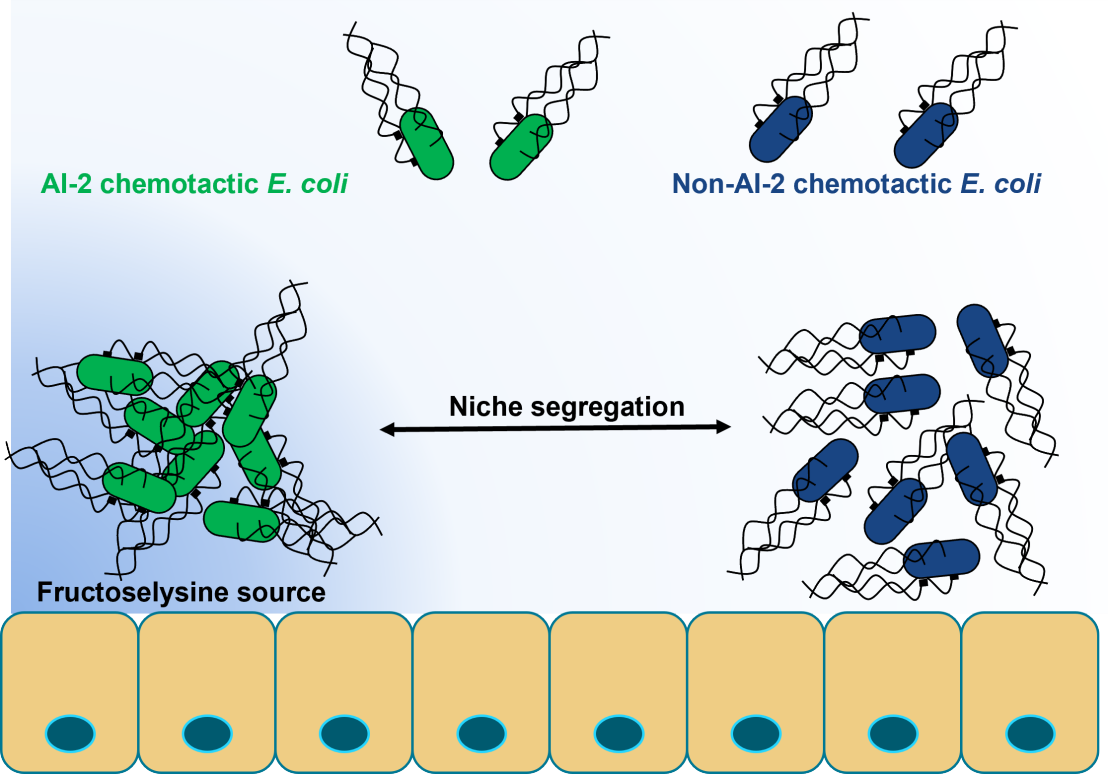Chemotaxis and quorum sensing provide E. coli with fitness advantage in vivo
A recent "Nature Microbiology" paper by the Hardt group in collaboration with Piel, von Mering and Sourjik groups shows that chemotaxis towards interspecies quorum sensing signal autouinducer-2 promotes gut colonization and co-existence of E. coli strains in the murine gut.

Bacteria communicate and coordinate their behavior at the intra- and inter-species levels by producing and sensing diverse extracellular small molecules called autoinducers. Autoinducer 2 (AI-2) is produced and detected by a variety of bacteria, and thus plays an important role in interspecies communication and chemotaxis. Although AI-2 is a major autoinducer molecule present in the mammalian gut and it can influence the composition of the murine gut microbiota, its role in bacteria-bacteria and bacteria-host interactions during gut colonization remains unclear. The team of researchers from ETH, UZH and MPI Marburg studied the roles of chemotaxis and AI-2 signalling in E. coli gut colonization.
In this paper, they show that chemotaxis towards self-produced AI-2 provides E. coli with a fitness advantage during gut colonization, and that this hinges on fructoselysine metabolism. Importantly, they further report the novel role of AI-2 chemotaxis in contributing to niche segregation and thus to co-existence of different E. coli strains in the gut based on their ability to perform AI-2 chemotaxis. These findings might be relevant for other AI-2 chemotactic bacteria in their natural habitats.
Link to the paper in external page "Nature Microbiology".